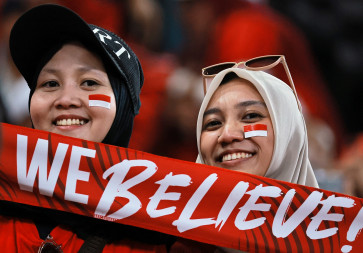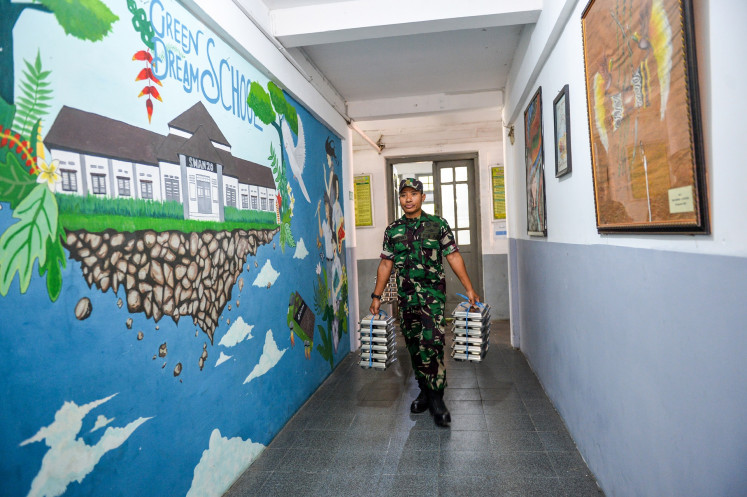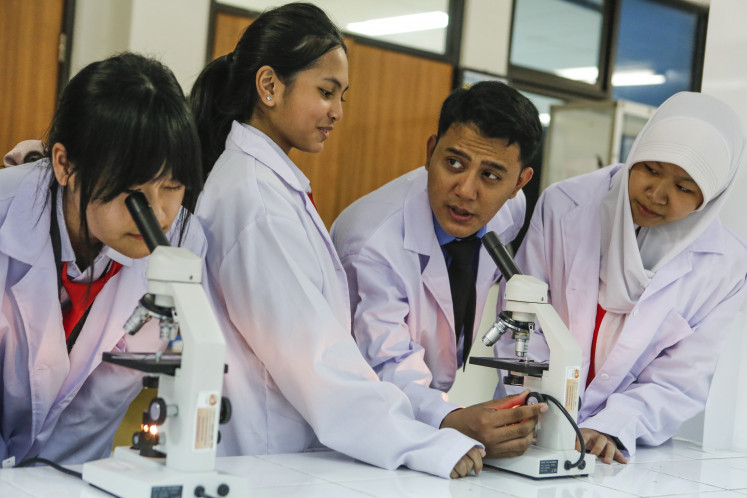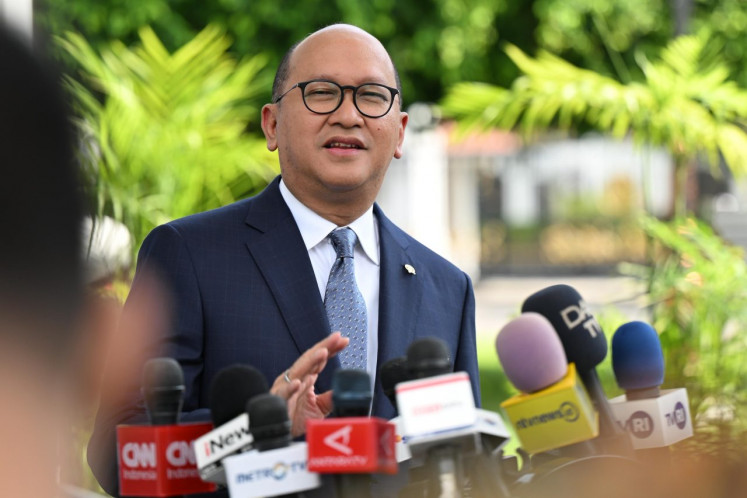Popular Reads
Top Results
Can't find what you're looking for?
View all search resultsPopular Reads
Top Results
Can't find what you're looking for?
View all search resultsGas flared into the sky alongside gas shortages: Why does it happen?
The government has announced that certain regions in Indonesia such as North Sumatra, and West Java are expected to have gas supply shortages up to 2014 (The Jakarta Post, March 31, 2009 )
Change text size
Gift Premium Articles
to Anyone
The government has announced that certain regions in Indonesia such as North Sumatra, and West Java are expected to have gas supply shortages up to 2014 (The Jakarta Post, March 31, 2009 ).
Lack of integrated national natural gas infrastructure and lack of supply sources in the right locations both contributes to simultaneous flaring and shortages. Up to 130 million standard cubic feet per day (MMSCFD) of gas is needed for power plants in Belawan and Paya Pasir North Sumatra, but only less than half of this demand can be met.
In the meantime, only half of gas demand in West Java and Jakarta can be supplied.
It is estimated that Indonesia flares annually between 2.4 to 3 billion cubic metres (bcm) annually (equal to 230 to 290 MMSCFD) from scattered oil and gas fields across the country. Given an average price of US$ 4/MMSCFD, the country throws away (flares into the sky) $1 million of gas per day that it cannot transport to where it can be used.
Gas flaring is a by-product of oil production and this gas is not considered worth capturing nor viable commercially, at least not using conventional technology.
Current LNG technology allows the commercial exploitation of natural gas from fields producing as little as 5 MMSCFD of natural gas.
As technology become more portable, the time needed for companies to recover investment gets shorter. If one gas field is exhausted, investors can easily transfer the equipment to tap gas from another gas field
New technology development has provided advantages for small gas field development. There are also more choices on how to do this. Small scale or mini LPG (Liquified Petroleum Gas) is now available as a technology choice for gas fields rich in butane and propane. This technology provides advantages as the country has embarked on a kerosene to LPG substitution and conversion program.
The utilization of gas flaring can benefit from CDM funding. Both power generation, LPG and LNG are listed as approved me-thodologies by the CDM Executive Board.
Considering the benefits of gas flare utilization in term of econo-mics and environment, the World Bank has started an initiative called the Global Gas Flare Reduction (GGFR).
The initiative launched at the World Summit on Sustainable Development in August 2002 has aimed to facilitate national efforts to use gas that is currently flared by promoting effective regu-latory frameworks, and building infrastructure to support gas utilization.
As a member of GGFR, the World Bank assisted Indonesia, to conduct a survey and economic screening of gas flared in Indonesia during 2006.
Out of 506 fields surveyed and analyzed 26 fields were found to have prospects for flared gas reduction by converting the flared gas to LPG, CNG, and LNG or to burn it as fuel for onsite power plants.
Despite the huge potential to use gas flared to help supply the domestic gas market, very little has been achieved. Out of 26 prospective fields for such action, only five fields have been successfully developed to deliver LPG and condensate.
From fields located in West Java and South Sumatra, Indonesia is able to conserve about 70 MMSCFD of previously flared gas and convert it to 327 tons of LPG and 800 barrels of condensate per day.
A gas flared reduction project located in Bekasi has successfully registered as a first CDM project.
Successive workshops conducted during the last two year to address CDM and gas flare reduction opportunities in Indonesia concluded that government presents the most challenging barriers for gas flared reduction.
The inability of government to provide a regulatory framework with sufficient clarity and certainty has caused companies to be reluctant to develop gas flared reduction projects.
Under Indonesian oil and gas law oil fields are developed under cooperation contracts mostly in the form of production sharing contracts (PSCs).
Under the contract system the approval for project development needs government approval. There is no clear understanding between government and companies yet on how such projects should be financed and how the revenues including carbon credits should be shared and allocated.
Although PSC contractors have benefited from available infrastructure no successful flared gas reduction projects have yet been undertaken by PSC companies.
In most cases gas flaring is located in isolated areas. Significant fiscal incentives are needed to commercialize the gas.
Even, if the government sets a zero price for gas flared to the investor, the government will still gain benefits in the form of additional supply of desperately need gas for the domestic market.
Considering the potential benefits of gas flare utilization in term of economic, environment and the enhancing of domestic gas supply, it is imperative that government take action to accelerate gas flare utilization in Indonesia. At least government needs to:
First, collect all gas flare data including the volume of gas flared daily, with gas specifications and make it available to the public or to prospective investors.
Second, as the regulatory framework is identified as the biggest hurdle for gas flared utilization and considering that a mature gas flare usually has a relatively short life span i.e. 5 year or less, it is necessary for government to quickly produce regulations to enable fast project development of gas flared reduction projects.
Third, investors or PSC contractors needs fiscal incentives for project development. Coordinated fiscal stimulus are necessary. In addition, efforts are needed to optimize the allocation of carbon credits gained under CDM for gas flared utilization to project developers, whether oil companies with PSC contracts or others likely to boost gas flare utilization.
Fourth, as mandated by the oil and gas law, the government should fix oil and gas prices. Government could exercise this mandate to boost the develop-ment of gas flared reduction projects by setting up well head gas flared prices as low as zero rupiah per MMSCFD.
The writer is a civil servant at Directorate General of Oil and Gas, the Ministry of Energy and Mineral Resources. This article is personal opinion.










